This week, NHSN Naturalists set off in search of some fabulous ferns along the Ouse Burn Way. See what they discovered…
Newcastle’s humid, shady river valleys are perfect places to find ferns and among them, Jesmond Dene stands out as one of the best. A popular city park with roots in ancient woodland, the Dene has undergone many transformations over the years, from an industrial hub to a naturalistic Victorian garden, and later, a beloved public park. Despite these sweeping changes, many woodland ferns have persevered here, surviving on inaccessible riverbanks, rocky outcrops, and in dark mossy corners. Together with NHSN Urban Naturalist, Ellie Davison, and local residents, that’s exactly what we set out to discover on our first Fern Foray. How many could we find in a three hour search?
Starting out near Pet’s Corner, some of the area’s generalist ferns were easy to find. These included Male-fern, Hart’s-tongue, and Maidenhair Spleenwort — all common and familiar species found throughout the Ouse Burn corridor, from shaded woodlands to parched urban walls. In the case of the spleenwort, this distinctive little fern is specially adapted to grow in the lime mortar of walls and structures, making it easy to spot even in the most built-up areas. Three down and many more to go!
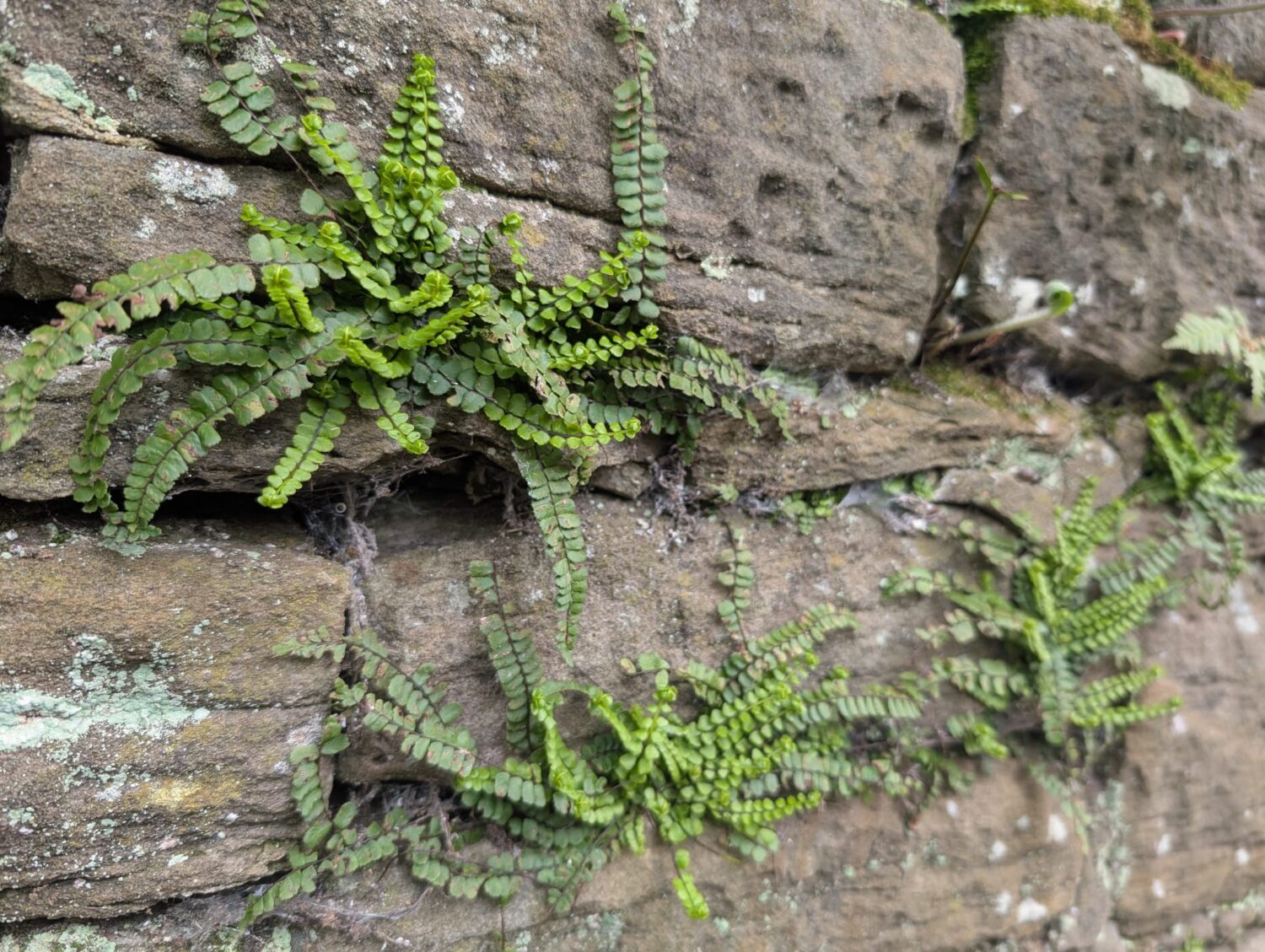
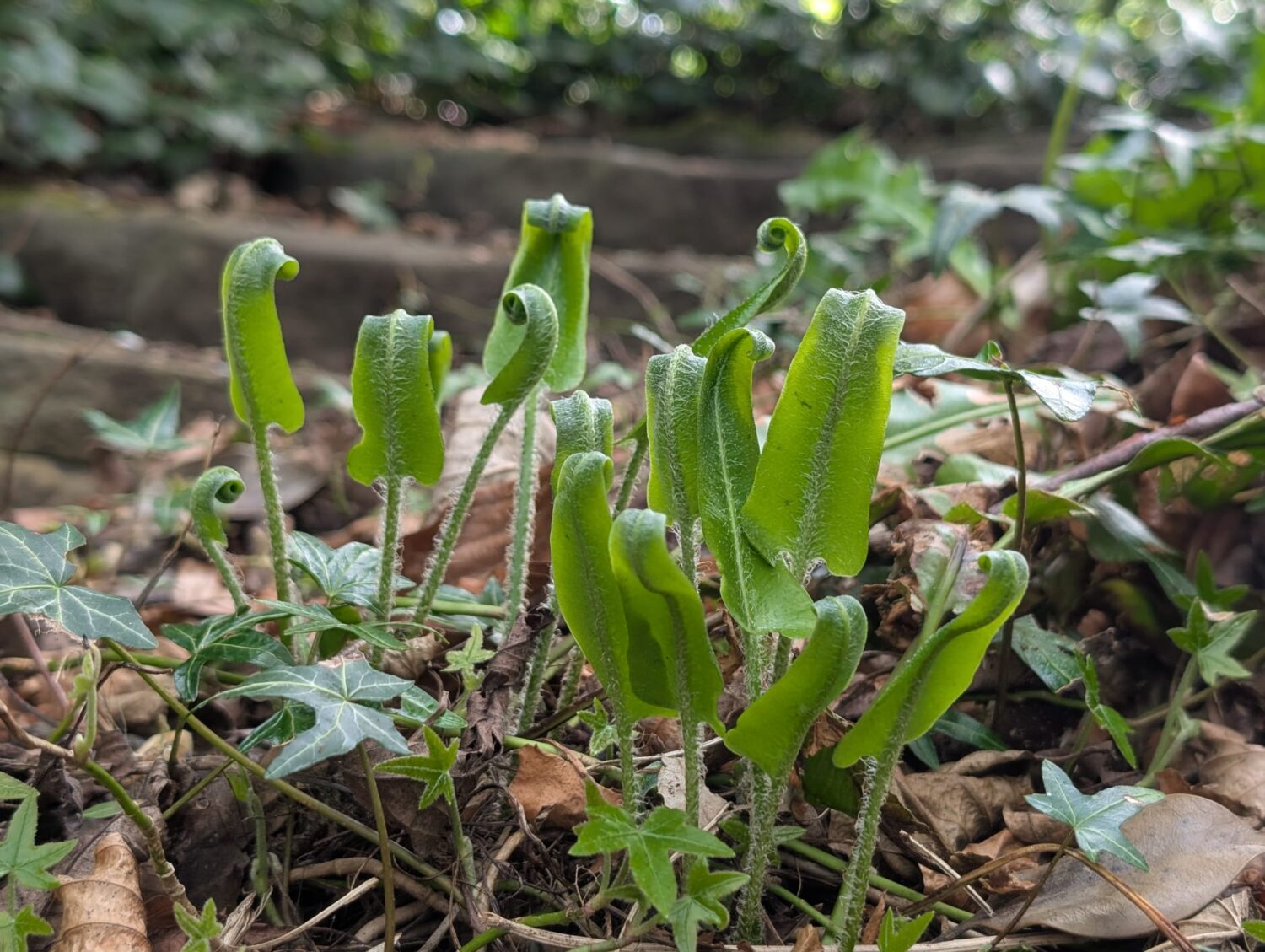
Our next stop was the banks above Pet’s Corner, where an unusual fern was discovered earlier this year. This rather shiny plant is the Japanese Shield-fern, a species common in horticulture but rarely seen in the wild. How it reached this unassuming muddy ledge is a bit of a mystery — it doesn’t appear to have been planted and may have spread from nearby gardens or perhaps from historic introductions to the Dene. As you’ll soon see, Jesmond Dene holds more than a few of these exciting oddities.
A few moments later, we noticed some fresh examples of another common woodland fern — Broad Buckler-fern, a large and unmistakable species that holds the distinction of being one of the only three-pinnate ferns in the Newcastle area.
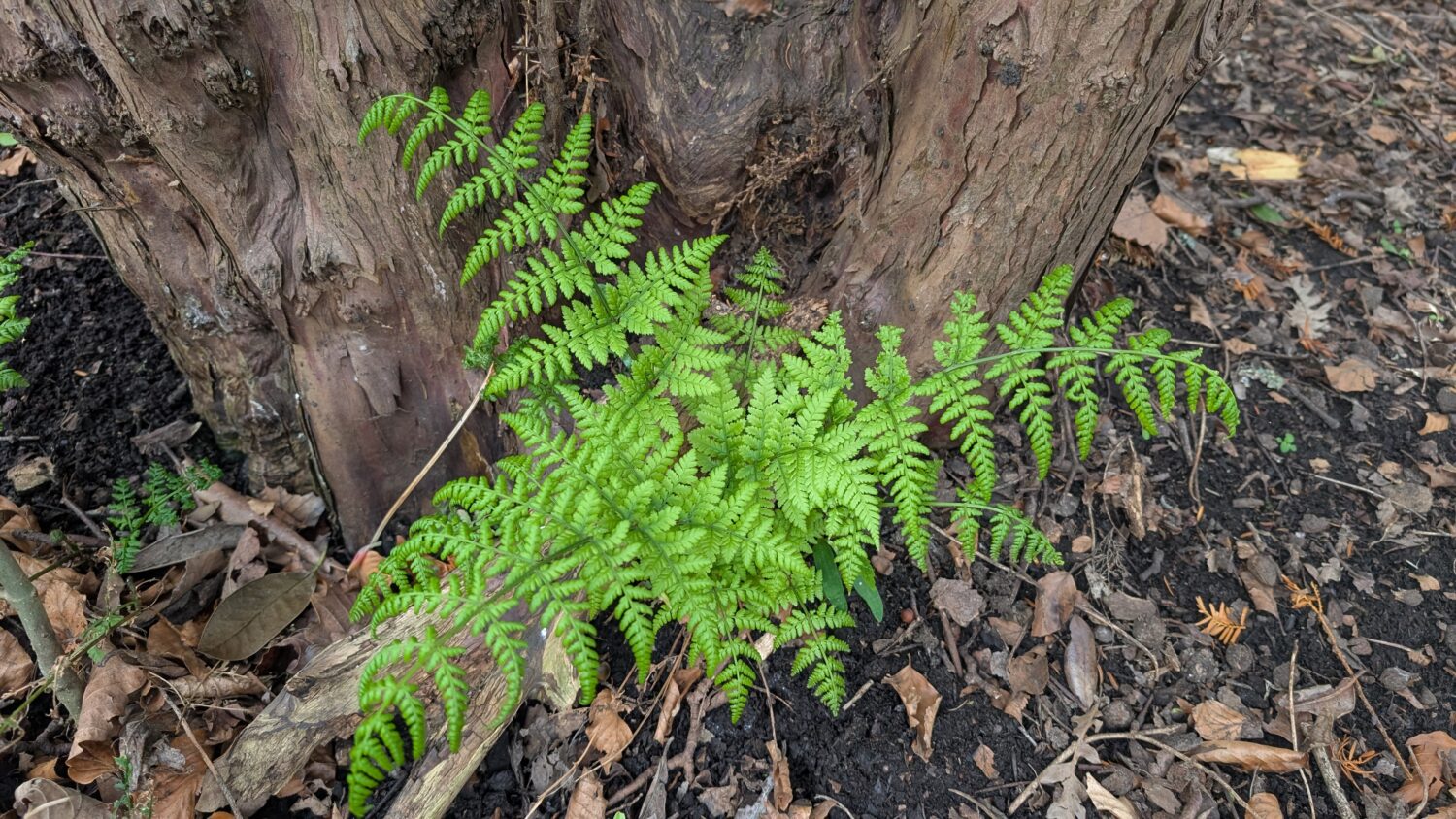
Further along the upper trail, we encountered three more unusual ferns. The first, Soft Shield-fern, is a British native, although historically it was not found in the North East. Instead, it has spread northward in recent years, helped in no small part by gardeners who prize it for its attractive fronds. Lord Armstrong, the former custodian of the Dene, is known to have introduced this species here sometime before 1894, so it’s possible that today’s population traces back to his efforts.
Along these trails, we also found another oddity: Autumn Fern (or Japanese Buckler-fern, depending on the source). This is another Asian species, widely cultivated, which may have reached the Dene in a similar way to the Japanese Shield-fern. We discovered four individuals during our trip, with several spotted around the Dene’s Victorian fernery which may well be the source of these exotic species and perhaps also, a most unusual fern found a few moments later. Shown below, this may be Western Sword-fern but required a bit more work to tell for sure…
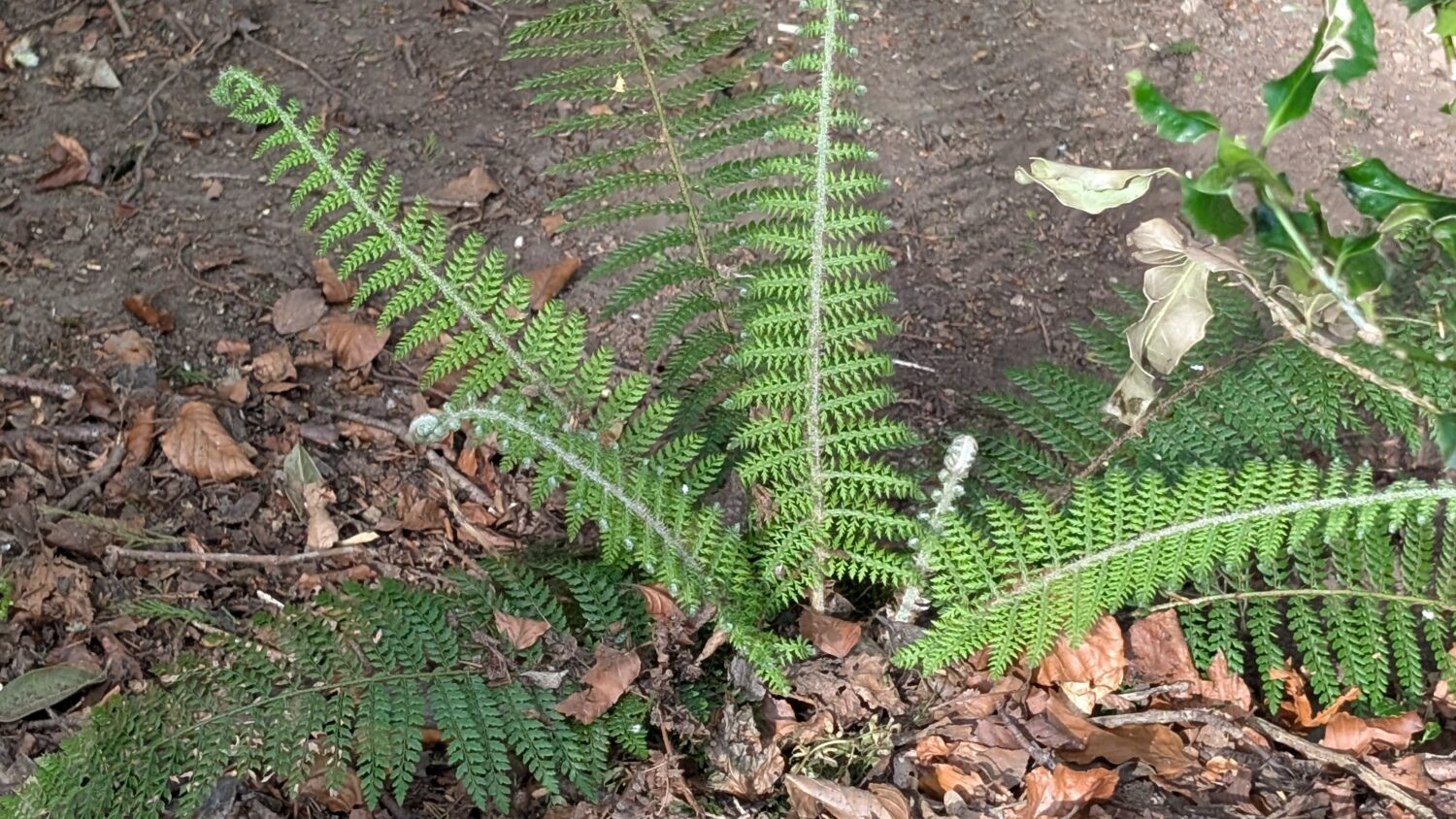
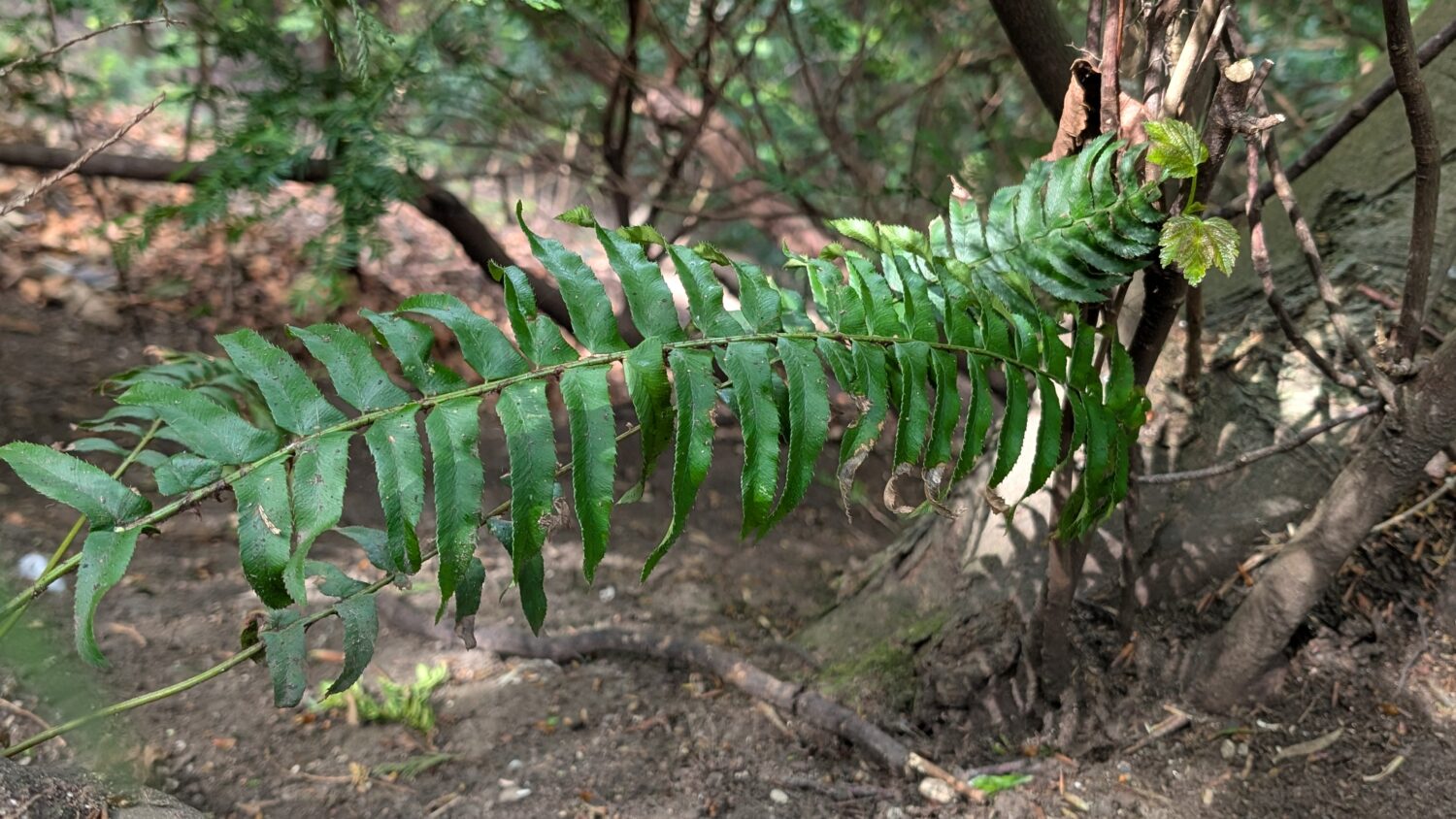
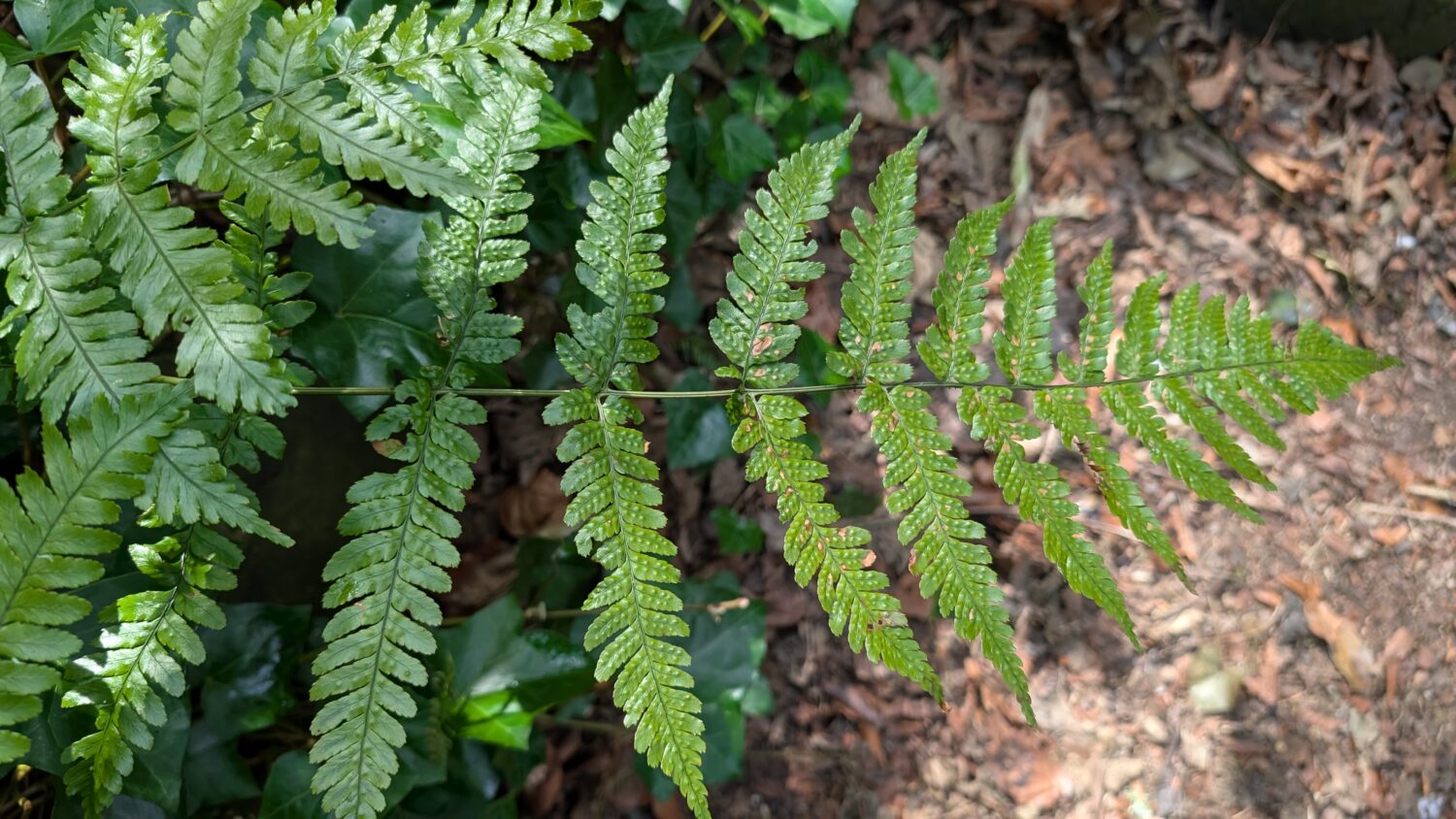
From here on, we chose to descend back into the depths of the Dene, following the Ouseburn to see what might be growing along its lovely, mossy banks. This soon proved a wise choice, as we quickly found ourselves puzzling over two of the Dene’s more complicated ferns — the Scaly Male-ferns (cue ominous music).
This group of ferns is notoriously tricky to tell apart and was only separated into distinct species relatively recently. However, there are a few key differences, particularly in the colour of their scales and the shape of their pinnules. We found both Borrer’s Male-fern and later in the trip, Golden-scaled Male-fern — two species that favour high-quality woodland. Just look at those scaly stems!
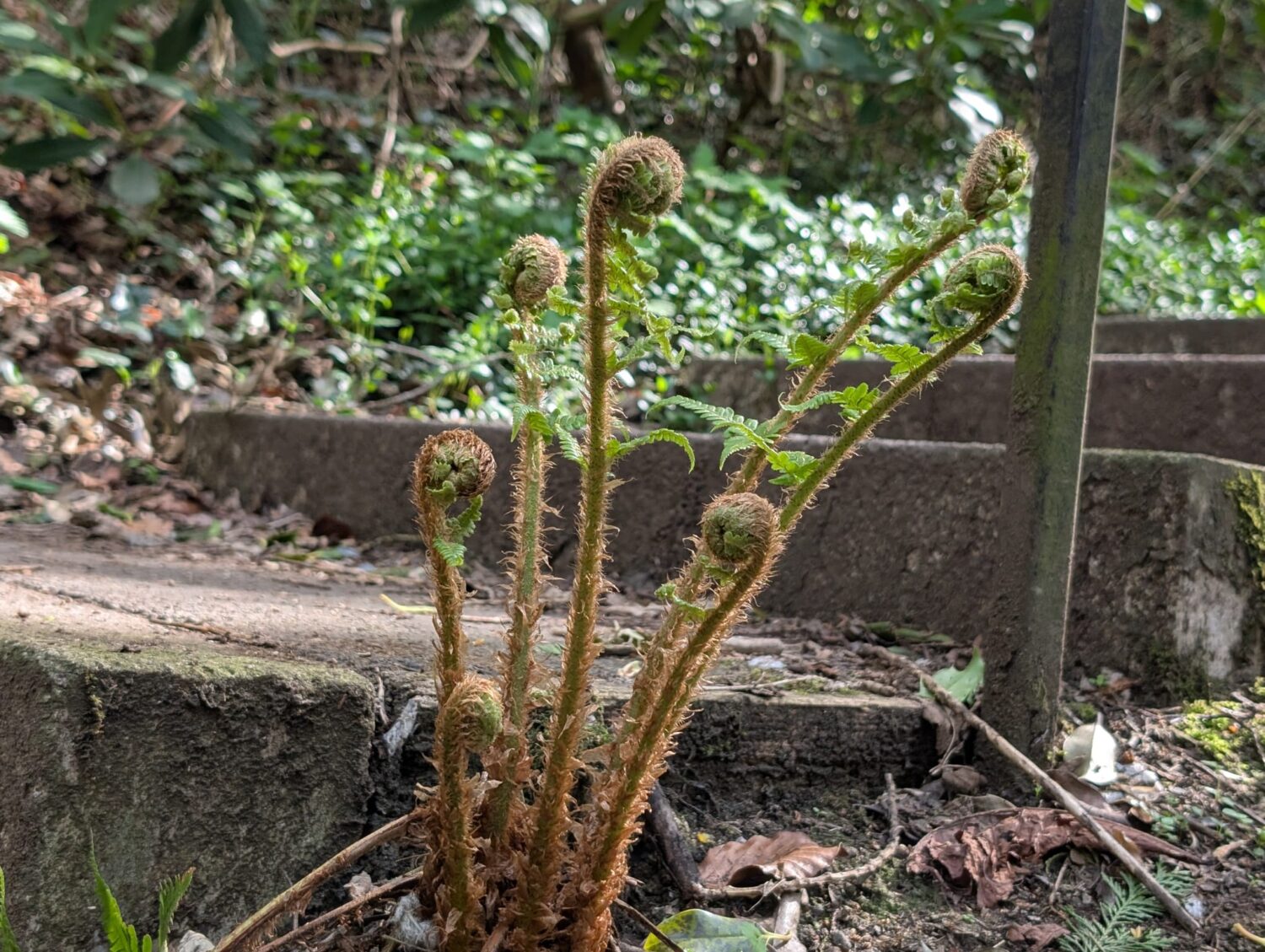
Further along our walk, we found even more interesting ferns in the upper portion of the Dene, beyond the stepping stones. This area is somewhat wilder and holds stronger populations of several plants associated with older woodlands. Here, our native Hard Shield-fern, with its spiny, tough fronds, was an exciting find across riverbanks and rock faces. Even better was the discovery of Hard-fern — an easy species to pick out from the crowd thanks to its once-pinnate (single-divided) fronds.
Hard-fern grows on steep, free-draining acidic banks around Newcastle and has become increasingly rare, with just a few populations now surviving in the city’s relic woodlands. We found two fine examples, though there may well be more hidden away in the Dene’s more remote corners.
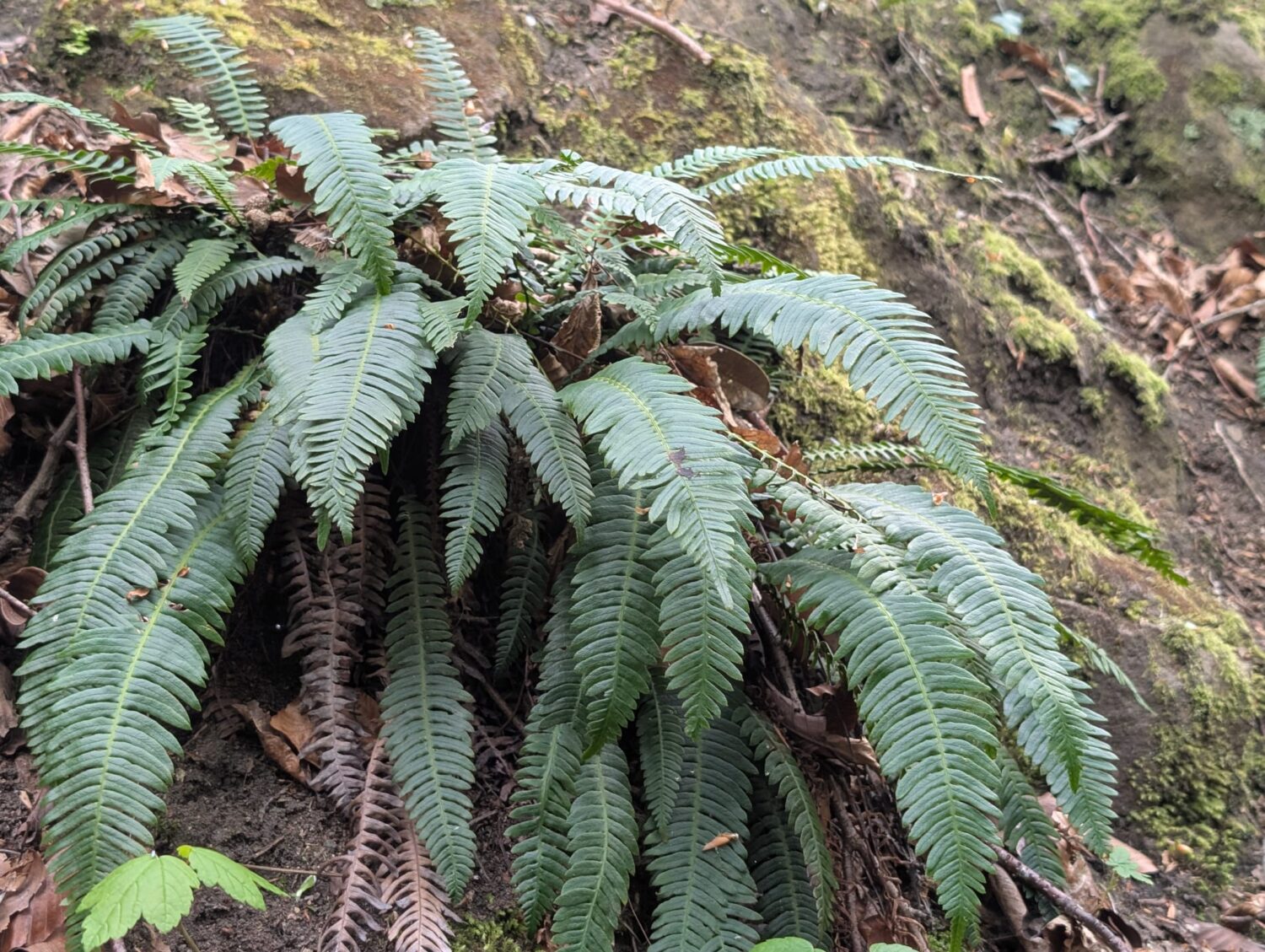
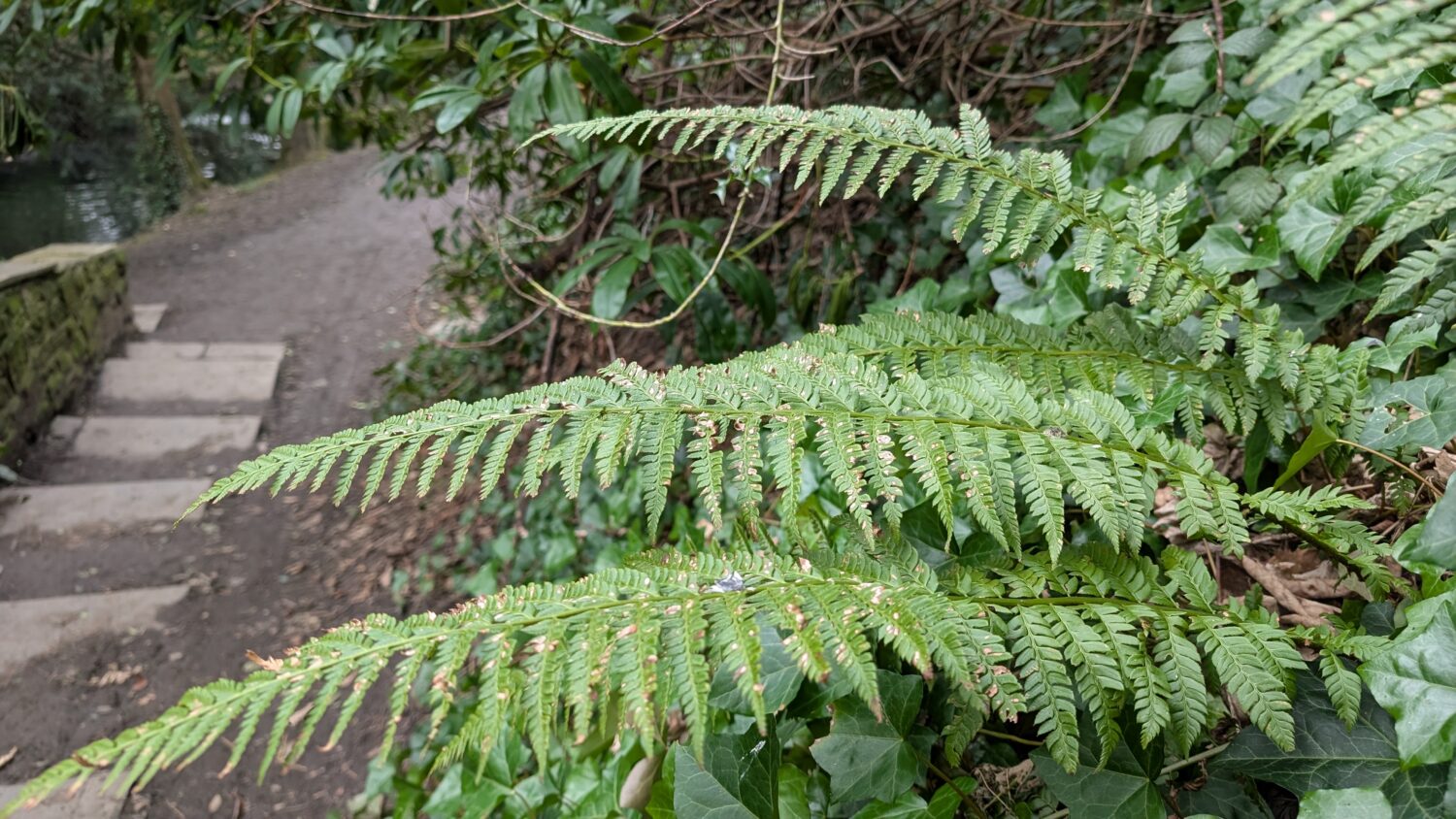
Having enjoyed the woodland flowers blooming in the upper reaches of Jesmond Dene, we set off on the return leg where spotted a few small populations of Wall-rue growing on walls along the Red Walk. This is a charming little fern, just as likely to appear on your garden walls as it is somewhere like Jesmond Dene. We also caught sight of what looked to be patches of Lady-fern across the far bank of the Ouseburn — but we weren’t quite keen enough to go swimming to confirm it!
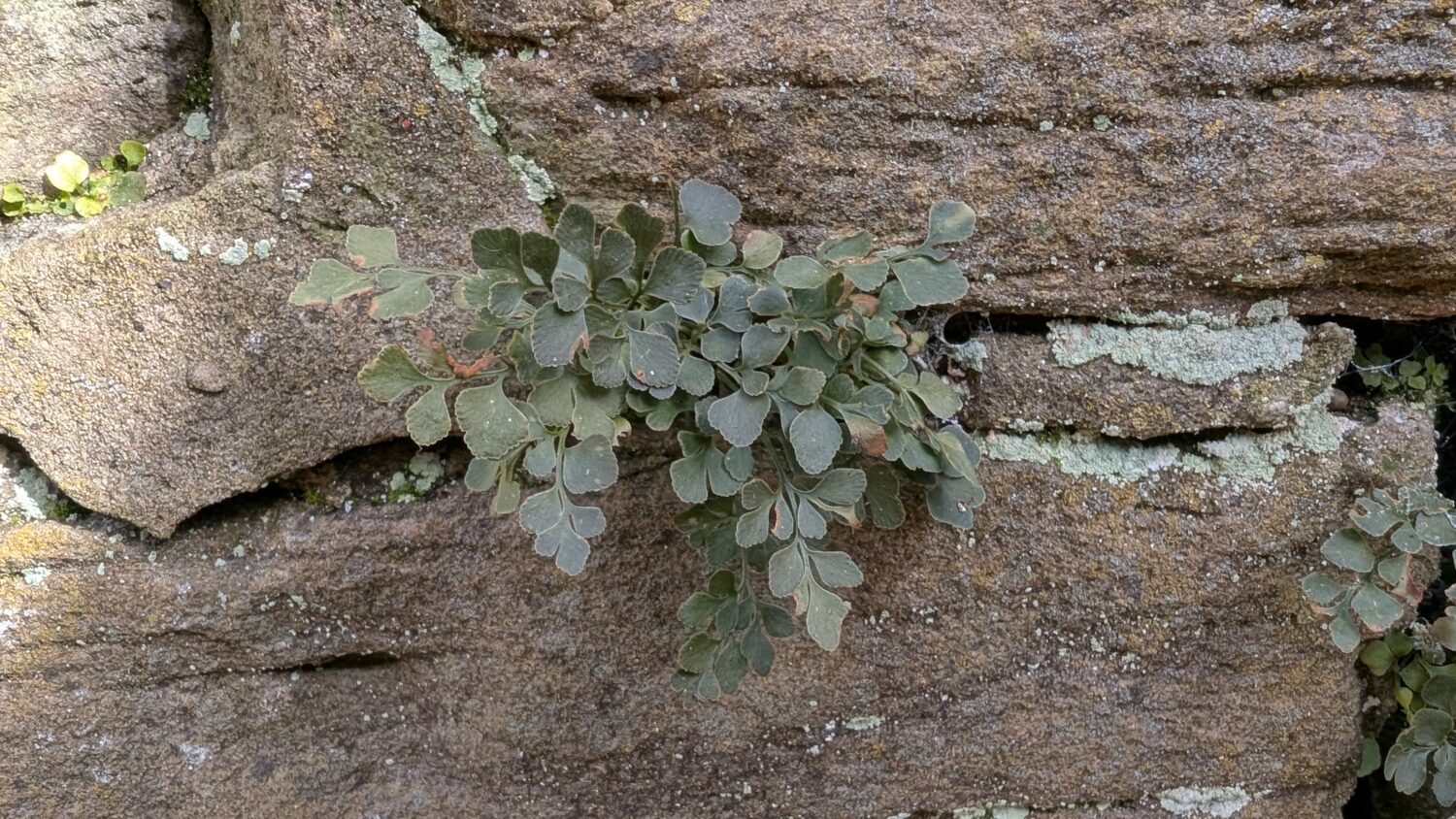
And there you have it, a quick round-up of a sunny spring morning spent admiring some truly marvellous ferns. In total, we found 13 species during our walk — a pretty great total, although we know we missed a few. Bracken certainly grows in select parts of the valley, and Polypody, an attractive, epiphytic fern usually found on trees, has also been recorded here. There may well be others waiting to be found too, if those unusual exotic ferns are anything to go by (you will tell us if you spot one, won’t you?).
Thank you so much to everyone who came along and please keep sharing your sightings as part of the Ouse Burn Way. By doing so, you’ll help uncover new and exciting information about the wildlife of this very special green corridor.
To read more about the work being done as part of the Ouse Burn Way, please click here.
